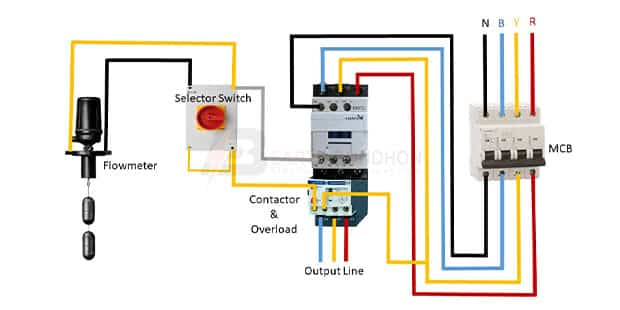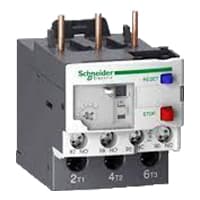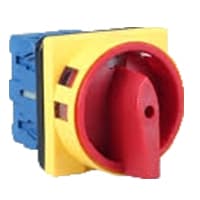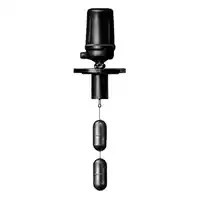Selector switch wiring diagram:
This diagram shows how to make Selector switch wiring diagram. In this circuit, we use an FP MCB ( Four Pole Minature Circuit Breaker ), a magnetic contactor, an overload protector relay, a selector switch, and a flowmeter. First, we need to connect the FP MCB with the power source, then connect the magnetic contactor with the FP MCB, then connect the contactor with the overload, then connect the selector switch with the contractor, then connect the flowmeter with the selector switch.
Advertisements
Components needed For this Project:
You can get the components from any of the sites below:
- FT MCB 25A [See Buy Click Amazon]
- Magnetic Contactor 40A [See Buy Click Amazon]
- Motor Protector Overload [See Buy Click Amazon]
- Selector Switch (220V AC) [See Buy Click Amazon]
- Flow Meter [See Buy Click Amazon]
*Please note: These are affiliate links. I may make a commission if you buy the components through these links. I would appreciate your support in this way!
Advertisements
Components used to make the Selector switch wiring diagram:
4 pole MCB for 4-Wires Connections, the one additional 4th pole for Neutral Wire Connection so that between Neutral and any of the other three will supply. In 4-Pole MCB the Neutral Pole is also having Protective release as in the Phase Poles connection. 3 Phase Supply with Neutral. TPN means triple pole TP + Neutral which is 3 - phases and Neutral. but the Protection is given for 3 Phases only and in 4 poles MCB Protection is given to all 3-Phases as well as Neutral. In the case of a 4-pole MCB. A Purpose is not to protect the Neutral but it is rather to Isolate the Neutral.
02. Magnetic Contactor:
A magnetic contactor is an electromagnetic switching device. It is generally used for controlling 3-phase Motors. The operation of a magnetic contactor is similar to that of a Relay. but a relay is used for low-power or low-voltage connections, and a magnetic contactor is used for high-power or high-voltage connections. As soon as the supply is applied to the magnetic contactor coil. its normally open contacts are closed and normally closed contacts are opened and the associated devices are also operated. This is how a magnetic contactor works.
Overload Protection is Protection Against a Running Overcurrent That Would Cause Overheating of The Protected Equipment. Hence, An Overload is Also a Type of Overcurrent flow. Overload Protection Typically Operates on an Inverse Time curve where the Tripping Time Becomes less as the Current Increases. This Overload Protector is an Essential Component for Many Sockets Power Systems. The Top-Quality Overload Protector can Effectively Protect Electrical Products from Power Surges.
04. Selector Switch:
A Mechanical Switch That can be rotated Left, right, or center to open or close the Electrical contacts is known as a Selector switch. The Main Function of This Selector Switch is to Control Devices and also to Switch Between a Minimum of 2 or Above Electrical Circuits. The Perfect Used for Selector Switch is When Used for Controlling the Output of a Device. We know that a Selector switch is Used to control the electrical current flow in a Circuit it can also be used to both Initiate and inhibit the Current Flow.
Water flow meters are devices used to measure the volume or mass of fluid that passes through a pipe for water. They are commonly used in water flow treatment and distribution systems, irrigation, and industrial processes. There are several types of water flow meters set, including positive displacement meters, turbine meters, ultrasonic meters, and magnetic meters. A water flow meter measures the total volume of fluid that has passed through a pipe over a certain time. A water flow sensor, on the other hand, measures the velocity of the fluid flow at a specific point in time. It is mainly used to monitor the flow rate in real-time, to detect any changes or irregularities in the water flow, and to regulate or control the flow as needed.
Thank You for visiting the website. Keep visiting for more Updates.
Frequently asked questions
Selector switches can be rotated to the left or right, to open or close the electrical contacts. The function of the selector switch is to control devices as well as switch between a minimum of 2 or more circuits diagram.
A Selector Switch is a device used to start or stop current flowing along a circuit or multiple circuits diagram. Devices in this family have an actuator or Knob that turns back and forth along a center axis point but have a predetermined number of stopping positions (2 to 7).
Push the button on the switch terminals that you are testing. Touch an ohmmeter probe to each terminal. The ohmmeter reading should change from infinity to 0 ohms. Keep each probe in contact with its terminal and press a different button, releasing the 1st button.
Contact points in an electrical circuit diagram are called terminals. The electrical entry point - or input terminal - on a rotary switch is called a pole, and some designs feature more than one, each connecting via rotation to a series of output terminals, called ways.
Simple selectors (select elements based on the name, id, and class) Combinator selectors (select elements based on the specific relationship between them) Pseudo-class selectors (select elements based on a certain state) Pseudo-elements selectors (select and style the part of an element).
Read more Single Phase Wiring
What is a kilowatt-hour (kWh) | kwh formula | What does kwh mean
Introduction to Electrical Units and CircuitskW and kWh on your electricity bill As your home uses electricity during...
What is the Difference Between kVA | What does KVA mean | kVA formula
Difference Between KVA ExplainedWhat does KVA Mean? There are technical terms aplenty when it comes to generators, and...
Power Factor | Power Unit | Energy | Electricity Unit
Power factor definition | Calculating Power FactorPower Factor Values In a purely resistive circuit, the power factor...






0 Comments